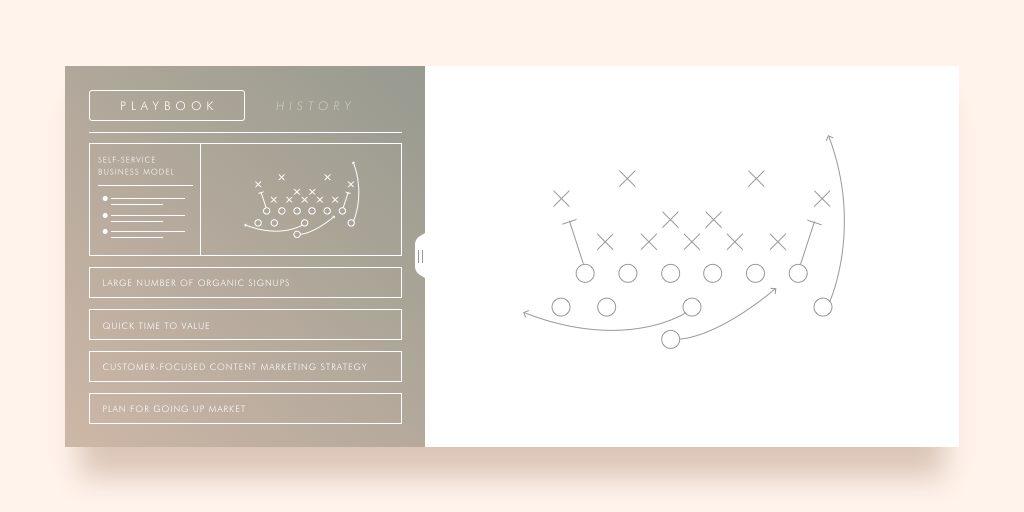August 2, 2016
SaaS Marketing
I’ve been an investor in Silicon Valley for the past 16 years. Combined with my time as a software engineer and product manager, I’ve seen the application software industry evolve first-hand: During the Client-Server Enterprise Software era of the early and mid 90s, buying cycles were driven by high-paid sales guys with big rolexes who often relied on high-pressure tactics and intimidation. Companies like Oracle would frequently close $10 million dollar software deals which included another $20 million dollar implementation contract for a consulting firm like Accenture. In many ways it was the Wild Wild West of business software. Software vendors succeeded through selling as much software to each customer as possible. Remember Y2K? After the year 2000 technology bust, in the SaaS 1.0 era, companies like Salesforce.com started to focus more on customer satisfaction and begun delivering hosted software. The buying process was still driven by regional sales reps that sold in-person and over the phone, but the price points were a lot lower. There was a lot less customization and customer satisfaction increased. In today’s Bottoms-Up SaaS era, companies like Zendesk and Autopilot are gaining traction and growing quickly by winning over many _successful _customers - those who can get results without lots of hand-holding, as opposed to high-priced or happy customers. Assisted by in-product tips and guides, personalized automated communications, and online shopping carts, self-service applications have made it simpler and faster for customers to adopt applications than ever before, while making the aggressive outbound sales tactics and endless customization requirements which worked well a decade ago obsolete. In this post, I’ll offer a common playbook for how to build a Bottoms-Up SaaS startup, based on commonalities I see amongst my fastest-growing portfolio companies and other successful Silicon Valley software startups.
1. Have a beautifully designed, sales-ready product
Your product needs to represent a beautiful solution to a latent painpoint. Think morphine not vitamins. This applies to both consumer products and B2B products. Beautiful products that are designed from inside out to deliver the simplest and most intuitive experience, delivering multiple aha moments within the first hour, day and week of use, is what drives word-of-mouth referrals and strong retention. I mentioned “sales-ready product” (as opposed to a minimum viable product) in the heading specifically with B2B SaaS startups in mind. A sales-ready product is better suited for most B2B companies, because it shows that you’ve done the work to understand the customer needs sufficiently, and there aren’t going to be any big feature gaps throughout your application. On the other hand, the minimum viable product approach shines when it comes to apps for consumers. It’s a great strategy for getting your product out and capturing an opportunity that’s time-bound, which usually means it’s something brand new which the world hasn’t seen before. When it comes to enterprise products, very few are brand new. Most are replacements for apps that have already been around. You have to get it right or you’ll lose your opportunity. For these reasons, it’s harder to MVP your way to success in enterprise software.
2. Start with a self-service business model
Unlike previous software eras, Bottoms-Up SaaS companies have the infrastructure for a completely self-service business model. New customers can purchase without ever talking to a salesperson. Doing so offers founders direct insight into their users’ app usage, their abandonment reasons, and direct access to feedback that is so critical for early UX and feature prioritization. Take Zendesk for example. Potential customers can sign up online for a free trial of their helpdesk software, give it a test run, and buy on their own. The plans start with a low price point, sure, but as more people in the company start using it, the subscription grows and before you know it a $10,000+/year subscription is common. _Without _an expensive sales process. The takeaway here is that if your customers can try, buy, and start being successful with no customization, minimal sales interaction and very little training, then you have a shot at the kind of scalable business model that the leading Bottoms-Up SaaS companies are using.
3. Drive significant inbound organic signups
Organic growth is the number one thing I look for in my portfolio companies. You can always spend money to buy customers (which can look good in the beginning), but non-paid leads trying your software because they’ve heard about it through word-of-mouth is almost magical. However, organic growth is hard to plan for. It’s easy to believe when you launch that everyone will break down the doors to try your product, but 9 times of out 10 that doesn’t happen. Your best bet is deliver on #1 above and to implement organic growth strategies into your marketing and see what moves the needle for your company.
4. Ensure quick time to value
Trying software is an investment of time and energy for your potential customers. Because of this, you need to help them quickly see the value of your product or at least give them an idea of what the value will be. This means:
- No FAQs, no training; the user interface should be intuitive and easy
- No dead ends in your product; your onboarding should guide users to a successful outcome
- No fluff; give users a return on their time and energy by leading them to their aha moment fast
The stickiest apps give users a shot of dopamine to the brain. It’s like the first-time you put everything in Dropbox and it started syncing without your having to do anything. Your files were instantly accessible and backed up in the cloud, and you said “Wow, that was awesome.” That’s quick time-to-value. It results in higher conversion rates and more word-of-mouth.
5. Develop a customer-focused content marketing strategy
Content marketing is another element I’ve seen contribute to the success of Bottoms-Up SaaS startups. Blog articles, email marketing, guest posts, webinars, and customer success stories drive the marketing engine, especially in this era where online buyers go through 57% of buying cycle on their own without talking to sales. Your best bet is to create helpful and relevant content for your potential customers. Pipedrive, a sales management tool, does a great job of this. The company publishes content like “The Sales Pipeline Academy” and “The Sales Pipeline Template” to help their prospects be more successful at their jobs before they even try the product. This strategy draws in new traffic, new leads, and eventually new sales in a highly cost-effective way. In the early stages of your company, it’s tempting to bring on another salesperson to get people on the phone and convince them to purchase. But if your lead gen isn’t humming then your sales reps are left to generate their own demand with cold emails, which is typically highly inefficient. You’re almost always better off hiring another content producer than another salesperson at the early-stage.
6. Plan for going up market
As Bottoms-Up SaaS startups catch on with hundreds or thousands of early adopters, it starts to look like growth without salespeople may continue indefinitely. If only that were the case. It never is in my experience. To maintain rocketship growth, startups will not only need to add more customers in every successive year but will also need to raise their average selling price year-over-year, which means selling to larger and larger customers. As you move from early adopters to mid-market and enterprise customers, the buying process becomes more rigid with business unit sponsors, procurement orgs, legal orgs, IT approvals, and budgeting cycles. It ends up being a more high-touch experience that requires salespeople to escort customers through the process. Initially, all of it can be done over the phone, but over time field sales is usually necessary. Given this reality it’s best to plan for this from the beginning. It will affect how quickly you grow, the types of people you hire and the capital needed over time. It’s become almost a point of pride to say “we have no salespeople.” However, in my experience, there are almost no exceptions to the rule. To reach the scale necessary to build a very large company, you will need a salesforce. The good news is you have time, measured in a couple years, to figure this out.
The Bottoms-Up Playbook
To recap, the playbook for bottoms-up SaaS startups includes a:
- Have a beautifully designed, sales-ready product
- Start with a self-service business model
- Build a large number of organic signups
- Ensure quick time to value
- Develop a customer-focused content marketing strategy
- Plan for going up market
While it’s easier said than done, executing this playbook will help put you in the elite category of today’s fastest growth SaaS startups.













